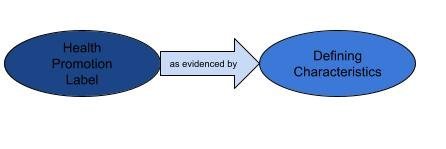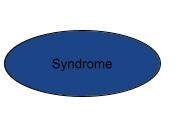The Ultimate Guide to Nursing Diagnosis

A nursing diagnosis is a fundamental part of the nursing process. It’s an essential tool for nurses and subsequently for the entire healthcare field.
In this complete guide to nursing diagnosis, you will find out everything there is to know about this vital instrument. What a nursing diagnosis is and its place in the nursing process; what types and classifications of diagnosis are out there; how to write and use a nursing diagnosis – these are just some things that we will put under a microscope in our article.
Let’s start exploring.
What Is The Nursing Process?
We can’t talk of nursing diagnosis before first explaining what the nursing process is and how the diagnosis fits into the grander scheme of things.
The nursing process consists of five steps, of which diagnosis is the second.
Assessment – The first step of the nursing process relates to thorough patient evaluation. Collecting data, such as vital signs, health history, psychological or socioeconomic evaluations, is an integral part of this step.
Diagnosis – After the assessment has been completed, the nurse can form a nursing diagnosis based on the collected data. The nursing diagnosis instructs the specific nursing care that the patient shall receive.
Outcomes and Planning – In this third step of the nursing process, the nurse develops a care plan drawing on information from the nursing diagnosis. The planning needs to be measurable and goal-oriented.
Implementation – This is the part of the nursing process in which the care plan is put into action. It takes place throughout the duration of the hospitalization up until the discharge of the patient
Evaluation – The final step of the nursing process involves evaluating the care plan based on the initial goals and desired outcomes. Should the results not align, the care plan can be adjusted based on the patient’s needs.

What is Nursing Diagnosis?
As we have already established, a nursing diagnosis is an important step in the nursing process. It is a concrete and evidence-based way for nurses to communicate their professional judgments to patients, fellow nursing professionals, members of other medical areas, and the public. The nursing diagnosis is developed based on information gathered in the assessment phase. Further, once a nursing diagnosis is elaborated, the nurse can move ahead and create a care plan, which can be used to measure outcomes of a patient’s care at a later phase.
NANDA International also referred to as NANDA-I, is the international organization in charge of defining, distributing, and integrating the process of standardized nursing diagnosis worldwide. According to the organization, the official definition of a nursing diagnosis is:
“A nursing diagnosis is a clinical judgment concerning a human response to health conditions/life processes, or a vulnerability for that response, by an individual, family, group or community. A nursing diagnosis provides the basis for selection of nursing interventions to achieve outcomes for which the nurse has accountability.”
What Are the Differences Between a Nursing Diagnosis and Other Types of Diagnosis?
Nursing diagnosis is not the only diagnosis one might come across in the process of care. That’s why it’s important to know the difference between different types of diagnosis. The three main ones to consider are nursing diagnosis, medical diagnosis, and collaborative diagnosis.
A nursing diagnosis refers to the process and, subsequently, the label nurses use to assign meaning to patient data collected in the Assessment phase. The data is labeled with NANDA-I approved nursing diagnosis. For instance, while assessing a patient, the nurse may notice that the patient coughs prior to swallowing any food, displays inadequate laryngeal elevation, and repeatedly reports “something stuck” in their throat. The nurse can conclude a nursing diagnosis based on these symptoms: impaired swallowing.
Examples of nursing diagnosis: risk for impaired liver function; urinary retention; disturbed sleep pattern; decreased cardiac output.
On the other hand, a medical diagnosis is made by a doctor or advanced health care practitioner. This type of diagnosis focuses on the patient’s disease, medical condition, or pathologic state – determining which falls into the expertise of advanced medical practitioners. While the nursing diagnosis can be subject to change, the medical diagnosis generally doesn’t change. It remains imprinted on the patient’s medical history forever.
Examples of medical diagnosis: atrial fibrillation; hepatitis; chronic kidney disease; hypertension.
Collaborative diagnoses are the ones that require both nursing and medical interventions. For the most part, these imply teamwork: RNs keep an eye on the health problems while the medical professionals prescribe drugs and more diagnostic tests.
Examples of collaborative diagnosis: respiratory insufficiency.

Nursing Diagnosis Classification
In order to easily keep track of nursing diagnoses, they need to be organized in an unambiguous and orderly fashion. NANDA-I has listed, arranged, and classified the nursing diagnoses in a register known as Taxonomy II, which has been in use for more than two decades. Taxonomy II is split into three levels: 13 domains, 47 classes, and 267 nursing diagnoses.
Currently, there are the following domains and classes:
- Domain 1: Health Promotion
-
-
- Class 1. Health Awareness
- Class 2. Health Management
-
- Domain 2: Nutrition
-
-
- Class 1. Ingestion
- Class 2. Digestion
- Class 3. Absorption
- Class 4. Metabolism
- Class 5. Hydration
-
- Domain 3: Elimination and Exchange
-
-
- Class 1. Urinary function
- Class 2. Gastrointestinal function
- Class 3. Integumentary function
- Class 4. Respiratory function
-
- Domain 4: Activity/Rest
-
-
- Class 1. Sleep/Rest
- Class 2. Activity/Exercise
- Class 3. Energy balance
- Class 4. Cardiovascular/Pulmonary responses
- Class 5. Self-care
-
- Domain 5: Perception/Cognition
-
-
- Class 1. Attention
- Class 2. Orientation
- Class 3. Sensation/Perception
- Class 4. Cognition
- Class 5. Communication
-
- Domain 6: Self-Perception
-
-
- Class 1. Self-concept
- Class 2. Self-esteem
- Class 3. Body image
-
- Domain 7: Role relationship
-
-
- Class 1. Caregiving roles
- Class 2. Family relationships
- Class 3. Role performance
-
- Domain 8: Sexuality
-
-
- Class 1. Sexual identity
- Class 2. Sexual function
- Class 3. Reproduction
-
- Domain 9: Coping/stress tolerance
-
-
- Class 1. Post-trauma responses
- Class 2. Coping responses
- Class 3. Neurobehavioral stress
-
- Domain 10: Life principles
-
-
- Class 1. Values
- Class 2. Beliefs
- Class 3. Value/Belief/Action congruence
-
- Domain 11: Safety/Protection
-
-
- Class 1. Infection
- Class 2. Physical injury
- Class 3. Violence
- Class 4. Environmental hazards
- Class 5. Defensive processes
- Class 6. Thermoregulation
-
- Domain 12: Comfort
-
-
- Class 1. Physical comfort
- Class 2. Environmental comfort
- Class 3. Social comfort
-
- Domain 13: Growth/Development
-
- Class 1. Growth
- Class 2. Development

What Are the Categories of Nursing Diagnosis?
NANDA-I recognizes four categories of nursing diagnoses: problem focused diagnosis, risk diagnosis, health promotion diagnosis, and syndrome.
Problem focused diagnoses, also known as actual diagnoses, are patient issues or problems that are present and observable during the assessment phase. They are based on the presence of certain signs or symptoms. A problem focused nursing diagnosis comprises three components: the diagnosis itself, related factors, and defining characteristics.
Risk diagnosis refers to clinical judgments concerning a patient’s vulnerability to developing undesirable health conditions unless the nurse intervenes. Essentially, a risk diagnosis says that a problem does not yet exist, but there are risk factors that could potentially lead to a problem emerging. Thus, nurses will offer care to avoid it. There are two components nurses have to account for with this type of diagnosis: a risk diagnostic label and risk factors.
Health promotion diagnosis, or wellness diagnosis, are the clinical judgments about the motivation and desire to increase well-being and reach one’s health potential. These judgments express a patient’s readiness to improve specific health behaviors. Health promotion diagnosis can exist at an individual, family, group, or community level.
Syndromes are the least present diagnosis in the NANDA-I taxonomy. They concern the clinical judgments that relate to a cluster of nursing diagnoses that occur together and are dealt with through similar interventions.
Below, you will find examples of each type of diagnosis from NANDA-I definitive guide to nursing diagnoses, Nursing Diagnosis: Definitions and Classifications, 2021-2023.
Problem Focused Diagnosis
|
Risk Diagnosis
|
Health Promotion Diagnosis
|
Syndrome Diagnosis
|
What Are the Components of a Nursing Diagnosis?
When writing a nursing diagnosis, certain components should be included. The components may differ depending on the diagnosis type. Below, you’ll find an overview of all the features of a nursing diagnosis:
Diagnosis label – It is a name that reflects the diagnostic focus and the nursing judgements.
Examples: ineffective health self-management; acute pain; impaired skin integrity.
Definition – This component delivers a clear, exact diagnosis description, making it easier to differentiate from similar diagnoses.
Example: for an imbalanced nutrition nursing diagnosis, the definition is: “intake of nutrients insufficient to meet metabolic needs.”
Defining characteristics – These refer to the observable details that pinpoint the existence of a problem focused, health promotion diagnosis or syndrome. It includes things that the nurse can see and things that can be heard, touched or smelled, or information coming from the patient or the family.
Example: for an impaired gas exchange nursing diagnosis, some of the defining characteristics might be: abnormal arterial blood gasses; abnormal skin color (e.g., pale, dusky, cyanosis); and headache upon awakening.
Risk factors – Risk factors can fall into one of several categories: environmental, physiological, psychological, genetic, or chemical elements that increase a patient’s vulnerability to an unhealthy event. Bear in mind that risk factors are only applicable to risk diagnosis.
Example: a risk for infection diagnosis may have one (or more) of these risk factors: chronic illness, like diabetes; inadequate vaccination; invasive procedure; malnutrition.
Related factors: These are the factors that in some way present a connection to the nursing diagnosis. They may have been existent before the diagnosis; they may be associated with it; they may contribute or abet a particular diagnosis. Related factors only occur in the case of problem focused nursing diagnosis and syndromes. Rarely, health promotion diagnosis may have related factors.
For an ineffective peripheral tissue perfusion diagnosis, hypertension is one of the potentially related factors. Others are diabetes mellitus, smoking, or a sedentary lifestyle.

How to Write a Nursing Diagnostic?
First, you need to carefully analyze all the data and identify the patient’s health problems, health risks, and strengths. Once you have all the information, you can formulate the diagnosis statement. NANDA International strongly recommends that diagnosis follow a specific template. This allows for accurate, precise, and valid diagnoses that nurses and other healthcare team members can easily understand and follow.
Each type of nursing diagnosis needs to contain certain information. Below, you will find the outline of how to write nursing diagnoses, including examples.
- Problem focused diagnosis:

Impaired bed mobility related to musculoskeletal impairment as evidenced by impaired ability to reposition self in bed.
Constipation related to inadequate toileting habits as evidenced by change in bowel pattern.
- Risk Diagnosis:

Risk for decreased cardiac output as evidenced by alteration in heart rhythm.
Risk for adult pressure injury as evidenced by Inadequate adherence to incontinence treatment regimen.
- Health Promotion Diagnosis:

Sedentary lifestyle as evidenced by insufficient motivation for physical activity.
Ineffective family health self-management as evidenced by difficulty with the prescribed regimen.
- Syndrome Diagnosis:

Post-trauma syndrome;
Chronic pain syndrome.
More Nursing Diagnosis to Help You Elaborate Your Care Plans:
As we have mentioned before, with 267 inputs, the NANDA-I nursing diagnosis list is comprehensive and an excellent tool for nurses used worldwide. We have used several nursing diagnosis examples throughout this guide, all collected from the NANDA-I 2021-2023 complete handbook. This section will provide you with additional nursing diagnosis examples that you can use to formulate and implement future nursing care plans.
- Decreased activity tolerance
- Risk for surgical site infection
- Deficient knowledge
- Decreased cardiac output
- Deficient fluid volume
- Ineffective coping
- Acute pain
- Ineffective thermoregulation
- Ineffective breathing pattern
- Risk for electrolyte imbalance
- Bathing/dressing/feeding self-care deficit
- Risk for ineffective childbearing process
- Risk for injury
- Fatigue
- Impaired physical mobility
- Ineffective airway clearance
- Readiness for enhanced communication
- Impaired comfort
- Obesity
- Risk for metabolic syndrome
- Disturbed body image
- Deficient community health
- Neonatal hypothermia
- Risk for bleeding
- Risk for vascular trauma
Are You Ready to Master This Critical Component of Care?
Nursing diagnoses are a useful tool which aids nurses in providing safe, quality, and evidence-based care. They are a critical aspect of patient healthcare that every nurse should know how to use, formulate, and write.

